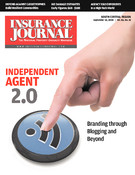After President George W. Bush surveyed the damage along the Texas Gulf Coast just days after Hurricane Ike rammed its way onto Galveston Island, he urged Americans not to succumb to “disaster fatigue” and to continue giving money to hurricane relief efforts.
It would be easy to give into such a fatigue, as one disaster after another — of the manmade and natural kind — dominates the news week after week. Investment bank Lehman Brothers Holdings Inc. filed for bankruptcy protection and insurance giant American International Group Inc. announced it was struggling for its very survival, obliterating from the headlines the devastation that Ike wrought shortly after that massive storm hit. The collapse of those financial behemoths came days after Merrill Lynch & Co Inc. agreed to a takeover by Bank of America Corp and months after the collapse of Bear Stearns, which was subsequently bought by JP Morgan Chase & Co. with help from the U.S. government.
It’s hard to imagine what folks in Southeast Texas and in Louisiana are living through in the aftermath of Hurricanes Ike and Gustav. Those areas haven’t fully recovered from the disastrous effects of Hurricanes Rita and Katrina three years ago. But while they may have had options as to whether to build their homes and businesses using disaster resistant techniques or whether to flee in advance of those storms, they had no control over the circumstances that created the natural disasters that befell them.
Not so, the corporate tycoons that control the financial systems in the United States. All of the companies mentioned above, it could be argued, were brought down by “perfect storms” of their own making. In a sense they didn’t protect their own houses by operating their firms using “financial disaster resistant” techniques.
While former AIG CEO Maurice “Hank” Greenbeg argued in an interview on CNBC-TV that AIG is “a national treasure” that should be saved, he acknowledged its problems are at least partly its own fault, blaming deterioration of the company on lax risk management and growth without controls. However, he maintained AIG’s problem is a liquidity problem, not a solvency problem, and that if it can’t raise cash from private markets, the Federal Reserve should step in with a bridge loan.
It’s interesting that many of the same people who are the first to bemoan government funding for innocent victims of natural disasters to help them rebuild change their tune and become advocates for government bailouts of corporations done in by human disasters that could have been avoided with sound financial management.-
Was this article valuable?
Here are more articles you may enjoy.




